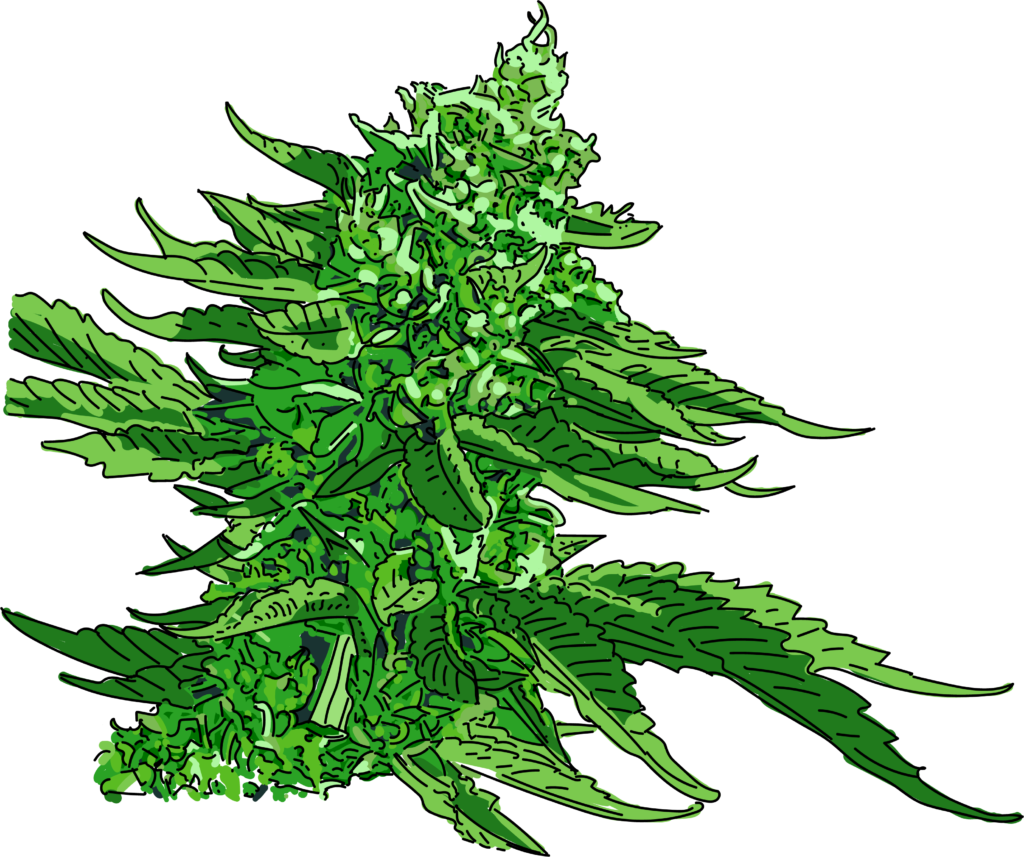
TRICHOMES: Trichomes have the highest concentration of THC in the plant. These resinous glands are reflective and potent. Good weed is often covered in Trichomes that can easily be seen when the bud is brought under light. This resin is used to produce hash and other concentrates.
CALYX/FLOWER: Calyces makes up the majority of bud. Calyces have the highest concentration of THC and are coated in trichomes. The calyx is what we smoke and what we call ‘flower.’
COLA: The Cola is the section of the plant considered most desirable. This is the part of the plants that grow buds and flowers, and eventually becomes the weed we smoke.
BRACT/PISTIL/STIGMA: Pistils are little hairlike strands that catch pollen to begin the process of reproduction. While they contain no THC, they are important indicators of the gender and maturity of a plant. Pistils are often brightly colored and are important to the visual composition of weed.
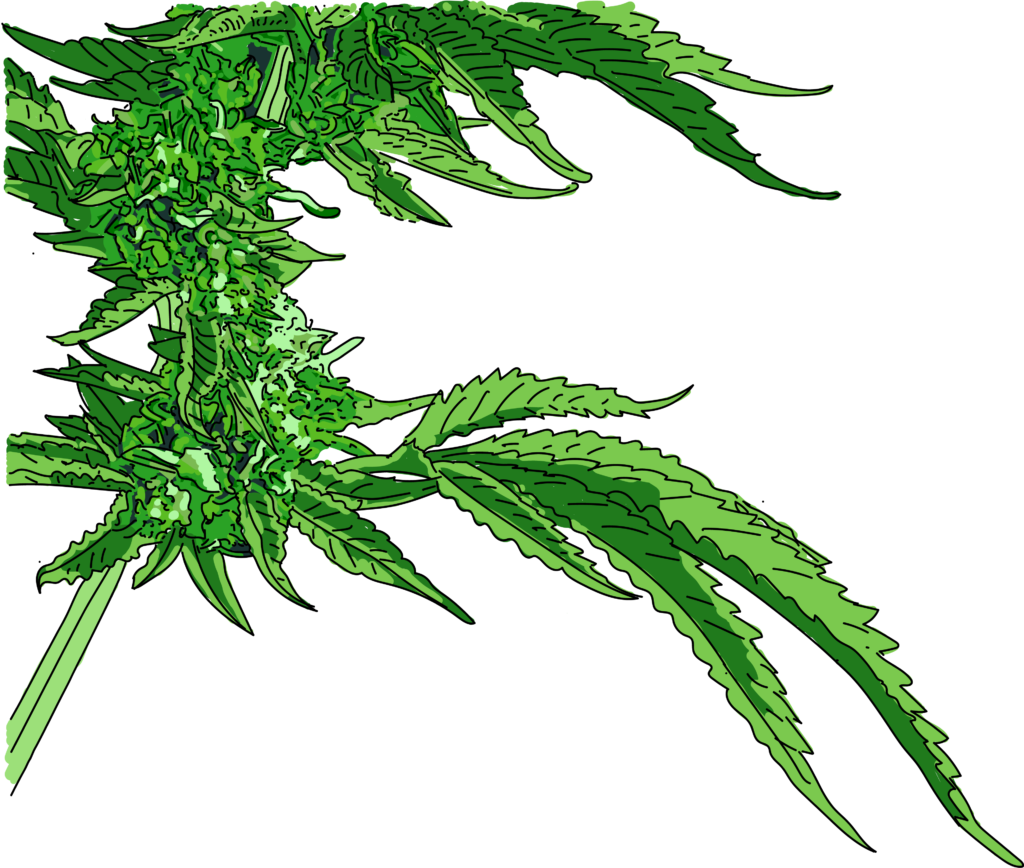
STALK: Stalks are made up of fibers that can be used in hemp products all the way from fabrics to rope.
FAN LEAVES: The iconic leaves that every stoner knows. These leaves are often discarded after harvest as they contain the smallest amount of THC in the plant.
SUGAR LEAVES: Sugar leaves are high in THC. After trimming, these leaves are used to make edibles or full flower concentrates.
STEM: The stem provides structure to the plant. It contains a little bit of THC and can be used in full flower extracts and tinctures.
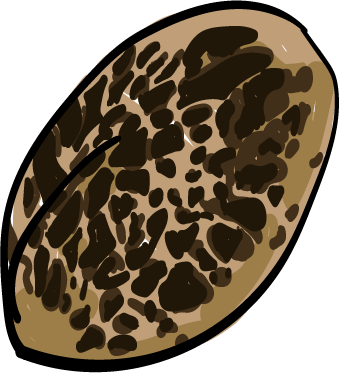
GERMINATION 1-2 WEEKS
The cannabis plant begins with a tiny seed. Mature and viable seeds tend to be dark brown and dry. There are a lot of farms that use clones rather than seeds to fill out their crop. At this point the seed has not been planted in soil, but is kept in a cool damp place.
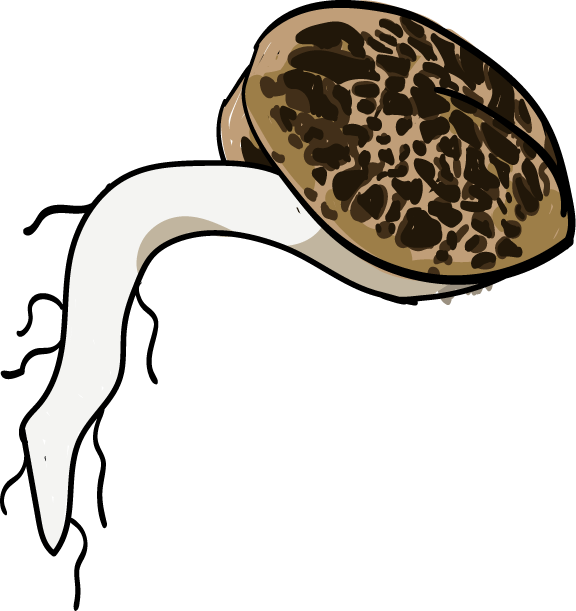
SEEDLING 2-3 WEEKS
The seed is transferred to soil or another nutrient medium. At this stage the plant requires the most light. The seed leaves (cotyledon) and fans leaves begin to grow at this point.
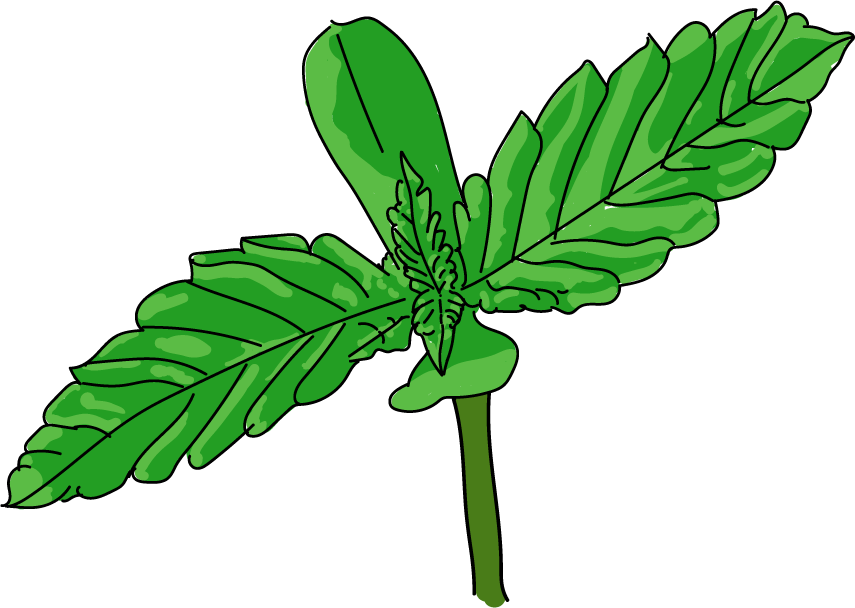
CLONING
Farmers take trimmings from the cannabis plant, and by providing the right conditions for these cuttings, get them to grow roots and begin the plant life cycle again. This process allows farmers to grow plants with specific characteristics, without having to rely on chance when growing from seeds.
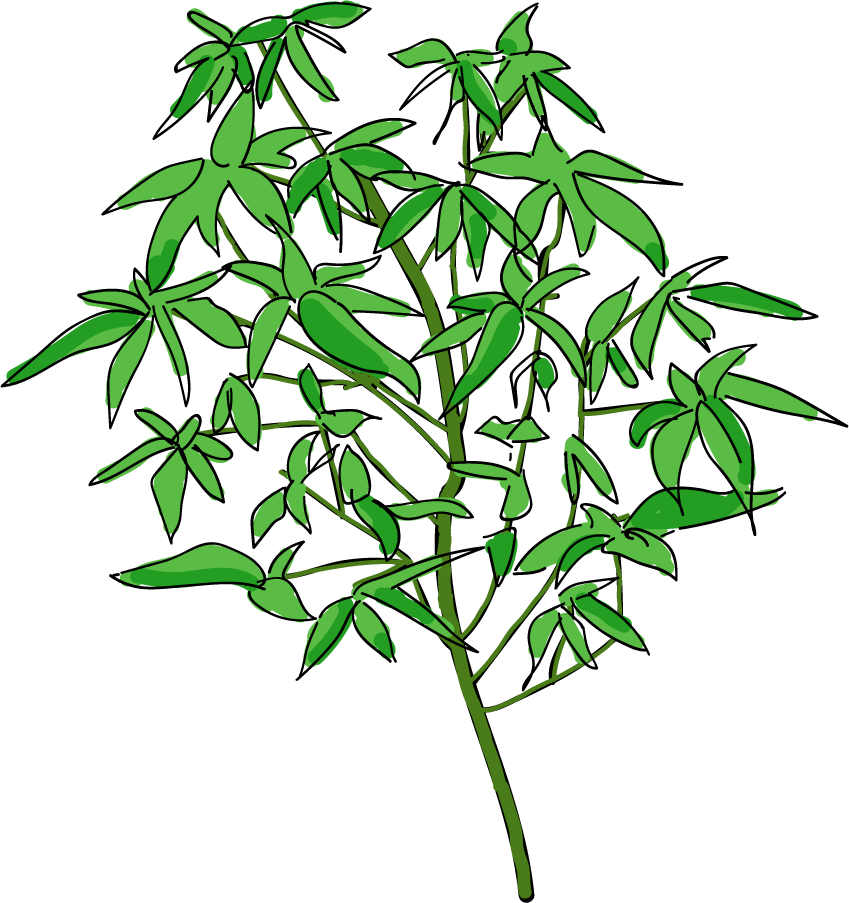
VEGETATIVE 2-8 WEEKS
At this stage the plant grows tall and wide to provide structure to support the heavy buds that will grow later. The plants show signs of gender late into this stage, and farmers will remove male plants from their crop. Clones are often taken at this stage as well.
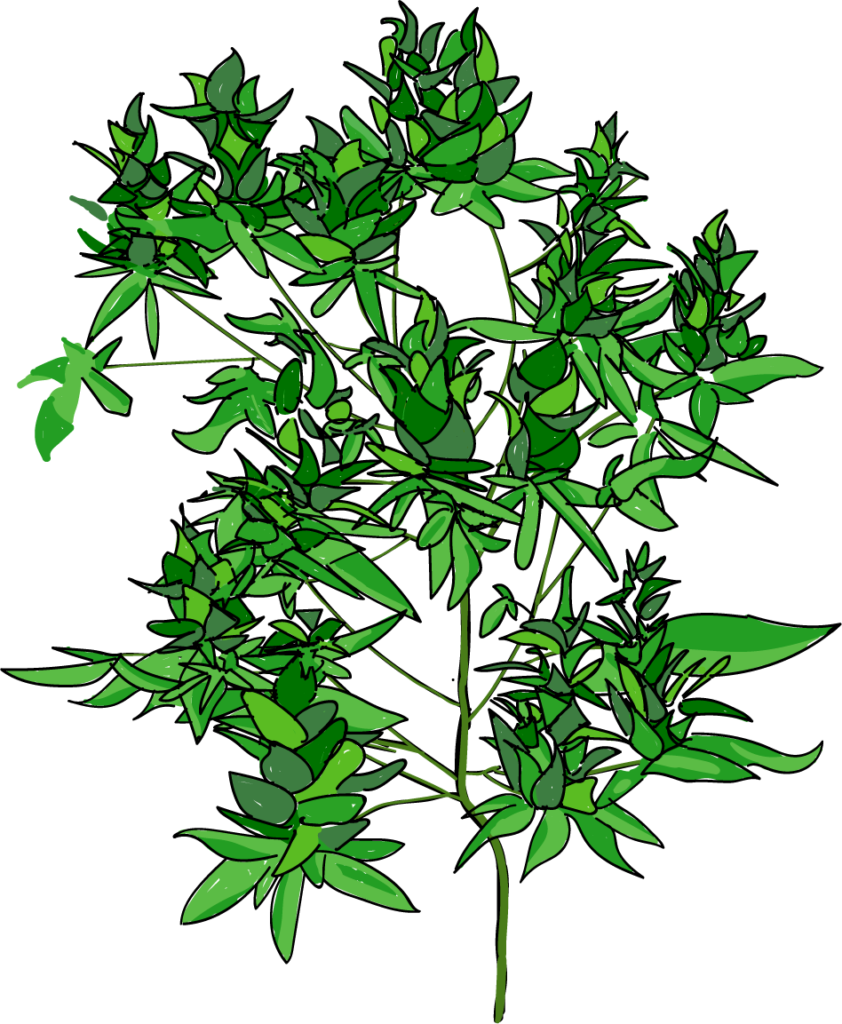
FLOWERING 6-8 WEEKS
This is the most demanding and intricate section of the growing process. As change in the amount of sunlight and darkness in the seasons occurs, the flowering process begins. With an explosion of growth, the plant changes from growing leaves to growing buds. If properly raised these buds will be dense, richly colored, and most importantly, covered in resin.
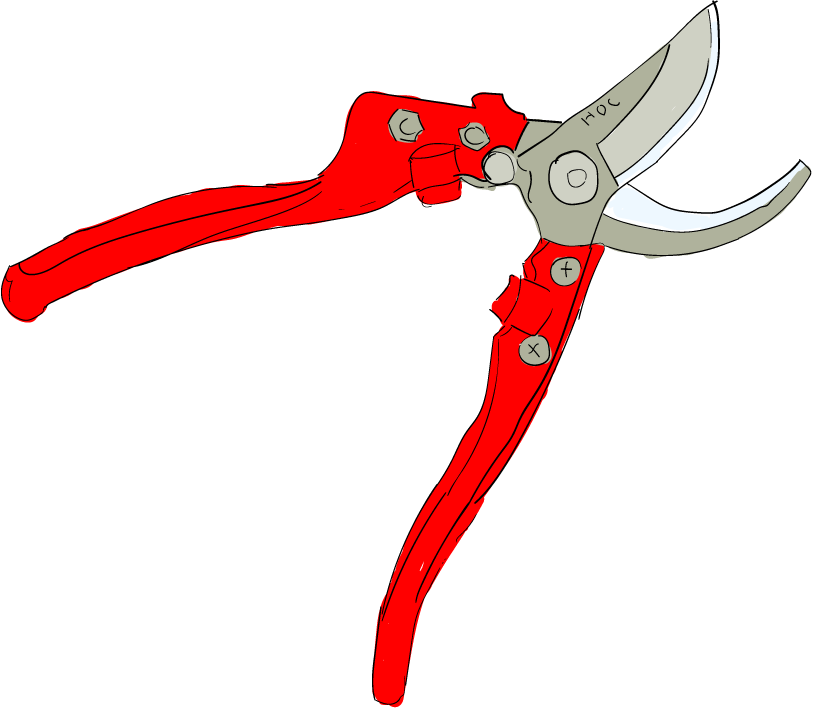
HARVESTING
As the pistils start to turn red, the stems broaden, the resin gets brown and darker, and the leaves start to curl up and turn yellow. The branches are cut and the leaves trimmed.
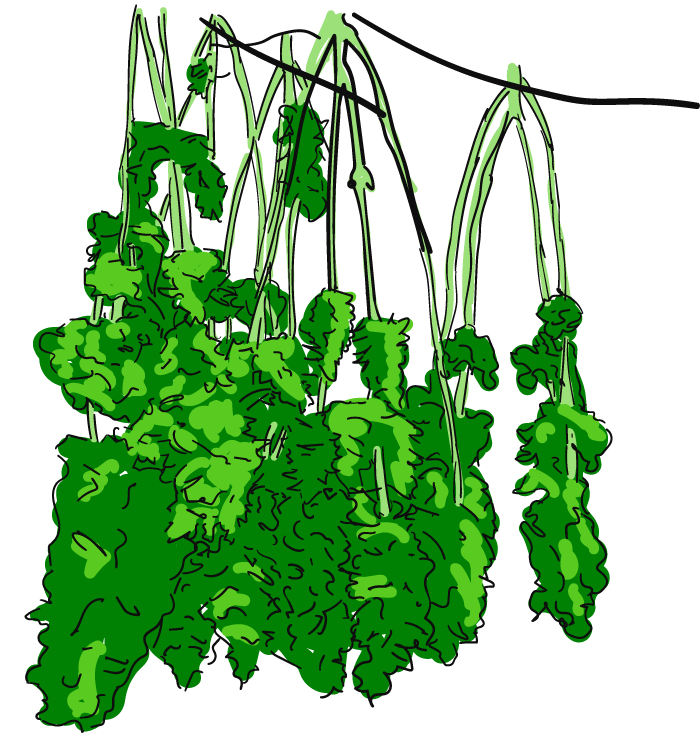
DRYING 4-10 DAYS
These stalks are hung to dry for about one to two weeks. The drying process produces a bud that smokes more evenly and retains potency longer.
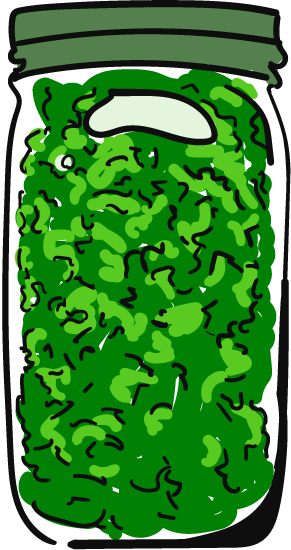
CURING 3 WEEKS
Once properly dried, the weed is removed from the stem and put in airtight containers that help to preserve the potency and quality of the bud.
